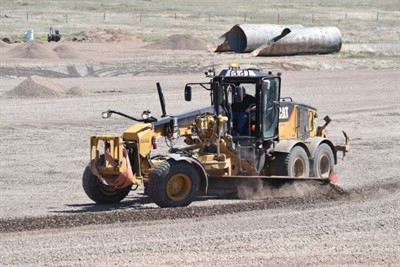Dust Control
_Web.jpg)
Dust Abatement applications for the 2026 Program will open next April. Follow us on social media for updates.
For more information on the Dust Abatement program, please go to Dust Abatement Program (Calcium)
_Web.jpg)
Dust Abatement applications for the 2026 Program will open next April. Follow us on social media for updates.
For more information on the Dust Abatement program, please go to Dust Abatement Program (Calcium)

The County owns and operates multiple resource pits, utilizing a fleet of six (6) heavy trucks to transport aggregates to stockpiles and directly apply them to gravel roads.
Each year, the County distributes 41,000 cubic meters of aggregate across 300 kilometers of arterial roads, 275 kilometers of collector roads, and 875 kilometers of local gravel roads. Aggregate crushing is outsourced to a contracted service provider. This approach allows the County to resurface 25% of its 1,450 kilometers of gravel roads annually, ensuring the program remains manageable within available resources, equipment, and labour.
Aggregate use is planned for and budgeted annually, focusing only on roads that require resurfacing. This strategy prioritizes road maintenance based on classification, necessity, and long-term resource conservation.
View the Aggregate Management Policy

Regular road grading ensures a safe driving surface for the public and helps preserve the County’s road infrastructure. The County’s 1,450 kilometers of gravel roads are divided into eight grader districts, with each operator responsible for maintaining approximately 181 kilometers. Roads are graded on a rotation of about 20 working days (roughly once per month), with higher-use roads receiving more frequent grading and low-use roads less frequent attention.
A 2012 rural road study classified roads into Arterial (heavy use), Collector (moderate use), and Local (low use) based on traffic patterns. Seasonal changes due to agriculture and industry also impact grading frequency. Grading season typically runs from May to October, when temperatures are above freezing and the ground is thawed.
Gravel road widths vary by classification:
Traffic levels on gravel roads can be estimated by wheel tracks:
Beyond grading, the County performs several seasonal road maintenance tasks, including:
For more details, refer to the Road Maintenance Policy.